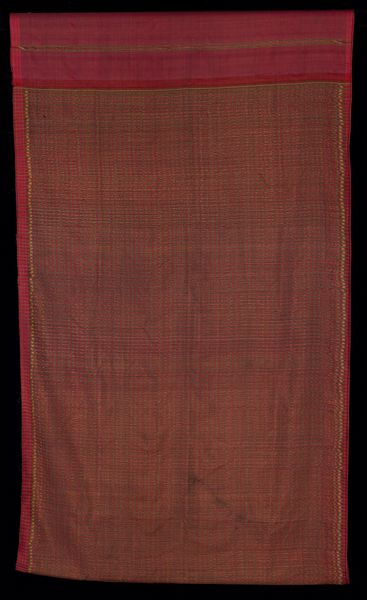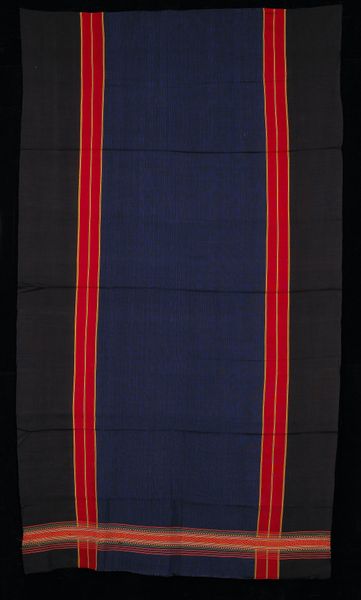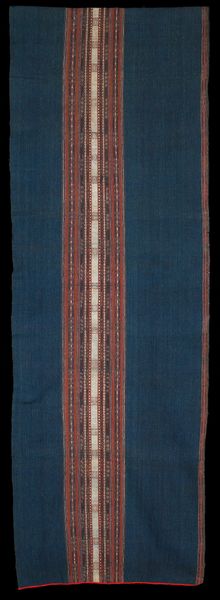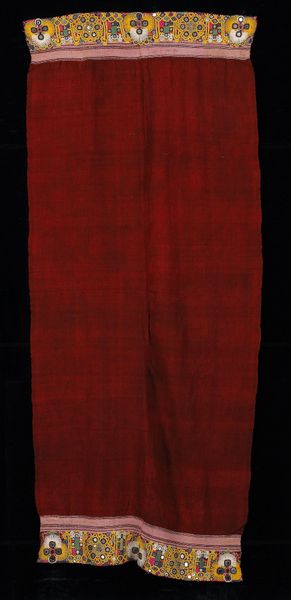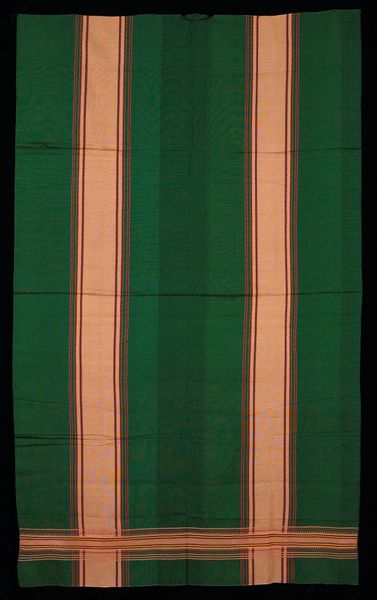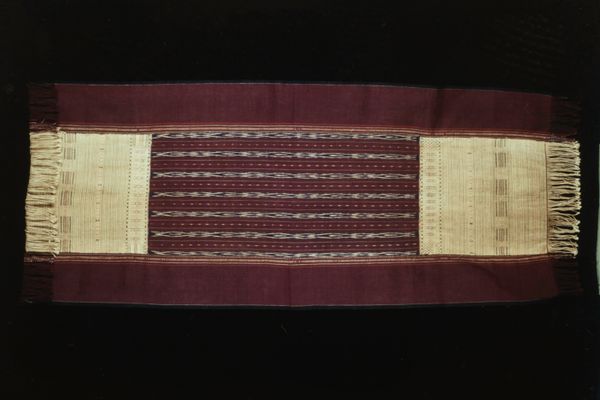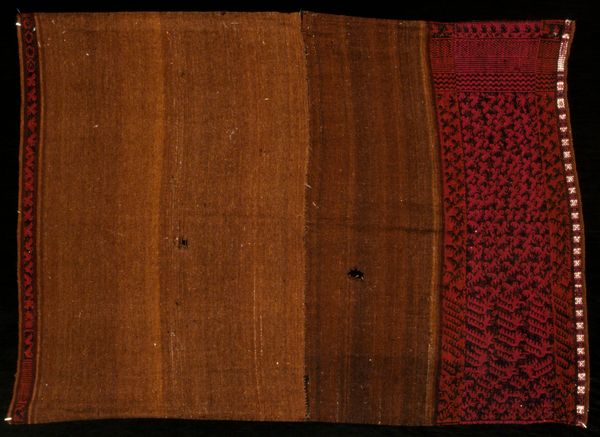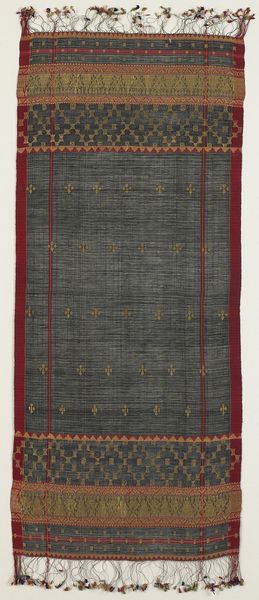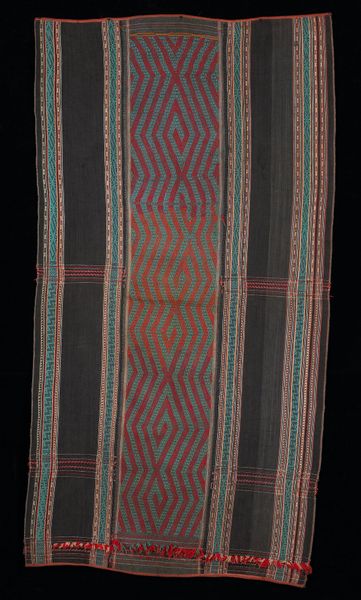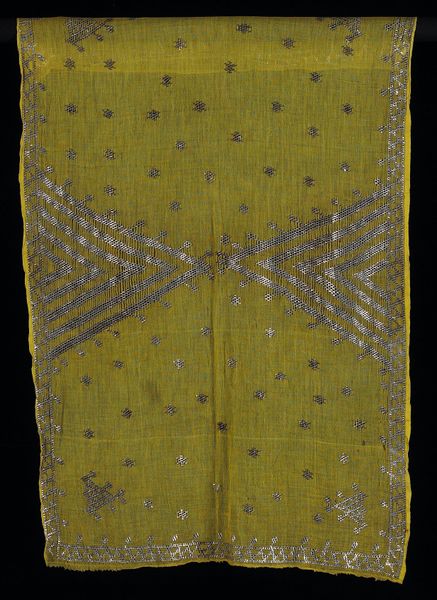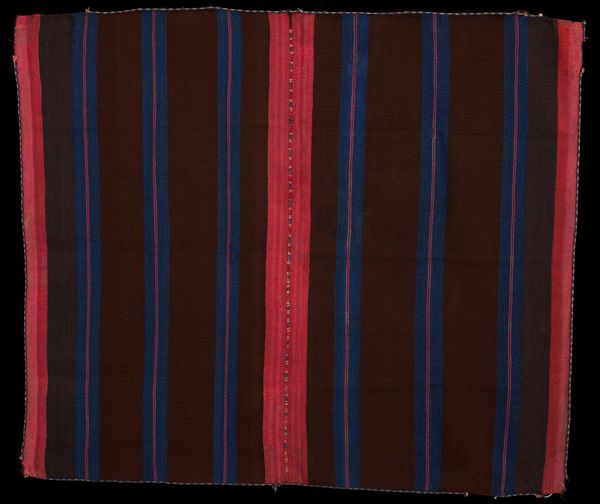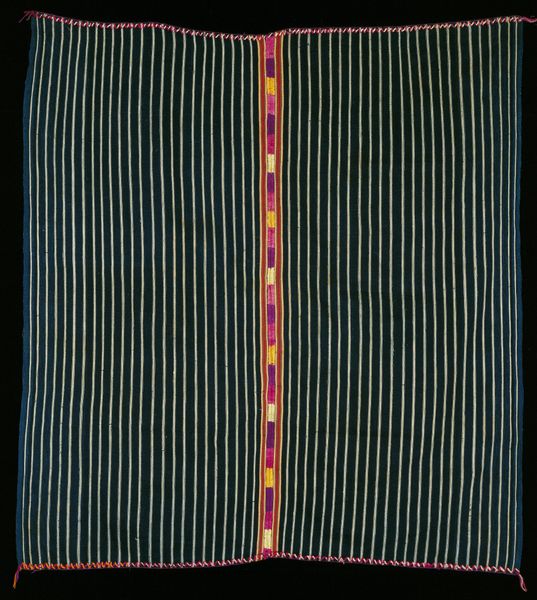
fibre-art, weaving, textile
#
fibre-art
#
weaving
#
textile
#
indigenous-americas
Dimensions: 46 7/8 x 39 in. (119.06 x 99.06 cm)
Copyright: Public Domain
Editor: This woven textile, a Man's Ilacoto mantle from around the 18th century, made by the Aymara people, strikes me with its strong geometric pattern, the deep blues contrasting against vibrant reds. What cultural meanings are embedded in this design? Curator: Look at how the red stripes flank that central field of deep indigo. Don't you feel a sense of enclosure, protection even? In Andean cultures, textiles are never *just* fabric. They’re imbued with symbolic meaning tied to status, identity, and cosmology. Those repeating patterns – are they merely decorative, or do they encode a deeper narrative? Editor: That’s fascinating. A narrative expressed through geometric shapes and colors. So, the placement of these colors... the bold red... it has a function in "writing" the cultural significance, in a sense. Curator: Precisely! Red, associated with power, lifeblood, vitality - placed on the outer edges to broadcast strength, or, perhaps, a guardian force around that interior space? Indigo, a precious dye representing the heavens, and reserved for those of high standing. Consider, then, who this man was who wore it, and what statements of power and status the mantle projects. Does the relatively plain nature of the design underscore a sense of understated authority rather than overt display? Editor: It’s almost like reading a portrait, only the visual cues are spun into the weave. It really highlights the artistry and meaning behind seemingly simple patterns. I will always look at weaving differently from now on. Curator: Agreed! Considering the visual symbolism invites a deeper contemplation on culture, anthropology, and history within one beautiful piece.
Comments
No comments
Be the first to comment and join the conversation on the ultimate creative platform.
